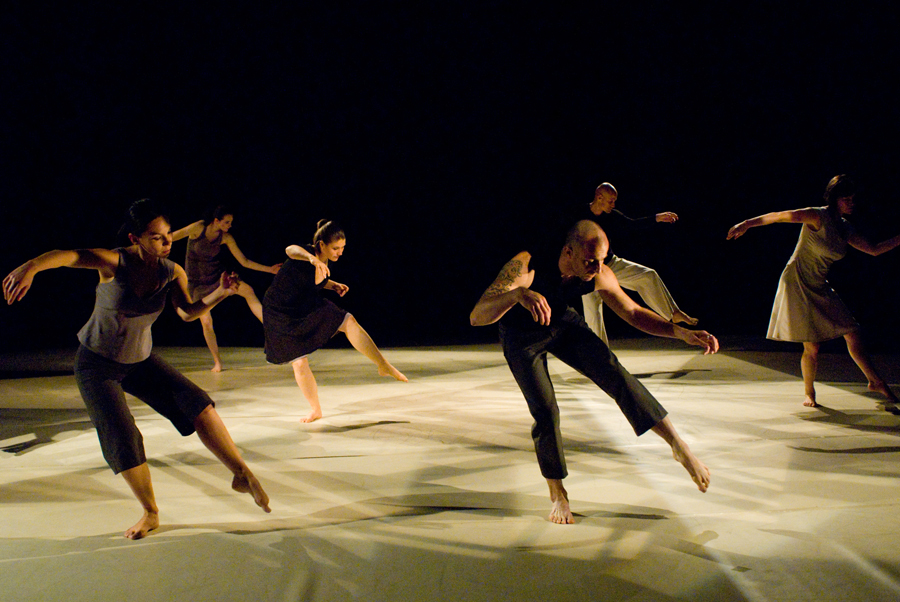
By Martha Ullman West
For Mary Oslund, the child’s sense of infinite possibilities has never ended. How else could she have made Childhood Star, her stunningly beautiful new piece, in which she seamlessly mixes every form of movement that has touched her life as a dancer and choreographer?
Commissioned by White Bird, for which we owe them our everlasting thanks, Star premiered at PSU’s Lincoln Performance Hall on Thursday night. (It repeats tonight and Saturday.) Like most of Oslund’s work, it is first and foremost about dancing itself, and an ongoing exploration of what the human body can accomplish aesthetically. It contains, of course, the movement vocabulary Oslund has developed over several decades – long-limbed extensions, geometric shapes, duets involving contact between dancers that initiate movement phrases – but there is also a breakthrough here: a new musicality, a softening of phrasing, a balancing of the emotional and the intellectual that make the piece achingly lovely to watch.
Much of that is owed to Christine Bourdette’s otherworldly set pieces (lumpy sacks that look like boulders), Jeff Forbes’ warm and subtle lighting, and Darrin Verhagen’s unusually (for him) rhythmic and melodic score.
Star begins lyrically, with a quartet of dancers, including company stalwarts Jim McGinn and Rinda Chambers, dancing seamlessly, magnificently, throughout the piece. The tone here is solemn, serious, as they dance in a space defined by Bourdette’s “boulders,” creating a different world — maybe the planet of Saint-Exupery‘s The Little Prince, it occurred to me hours after I got home from the performance.
More dancers come on stage, and the space-eating, long-limbed angular movement continues, but tempered with quick, flicking motions of the feet and fingers and occasional classical turnout – Oslund’s training began, after all, in the University of Utah’s ballet program. The women bend their bodies, gaze at the ground, looking for something? Burdened by something? Just as you think you’ve found the answer, the music shifts into syncopated rhythms and the energy onstage becomes playful, even jazzy. In another mood shift, the lights get darker and the set looks like a de Chirico painting, off-kilter, surrealistic; and then warm lighting returns and the movement gets playful. Hands get used like little paws, arms swing; there is a jerking-forward of shoulders that’s reminiscent of some of the agitation in Oslund’s lovely Salvation Pieces from years ago. Small movements are balanced with large ones, and you know that someone who has mastered her craft is in charge here.
Star ends as it began, gently, with a duet by Chambers and McGinn, whose ease in performing this incredibly difficult movement boggles the mind. Other company members also stood out: Keely McIntyre, one of this city’s most compelling dancers; Amber Baker, and Jessica Hightower.
The program opened with a reprise of McIntyre’s Drift, a duet performed by the choreographer and Noel Plemmons. The dancing, which begins with the pair entwined on the floor and ends with them separated by some emotional disturbance, is fluid and fine, but the choreography could use some editing, something that experience teaches all young artists to do.
*
Oslund + Co. in performance at White Bird. Photo: John Klicker